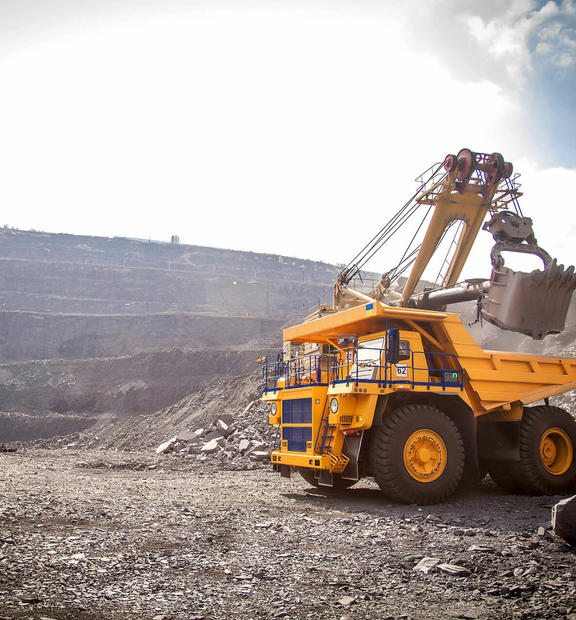Cellular IoT is transforming mining
The fourth industrial revolution (Industry 4.0) – wireless applications, remote control, telemetry and automation – is transforming mining by delivering efficiencies, reducing costs and improving profitability and safety. Providing the always on, high data performance wireless connectivity needed to support mission critical applications in mines is challenging.
Mining faces unique wireless connectivity challenges
The big challenge is that wireless connectivity is not perfect. There are coverage gaps and there can be data performance variability. For mining applications, this can potentially mean missing or delayed data, reduced application performance or applications stopping completely.
Specific cellular IoT for mining industry challenges:
- Delivering wireless service underground or in large open pit environments that are constantly changing through excavation and as tailing piles grow – necessitating network reconfiguration and re-optimization.
- Delivering connectivity to large vehicles and equipment with changing orientation and during mobility – necessitating multiple and well positioned antennas
- Delivering uninterrupted video uplink connectivity and bandwidth to support remote control and automation applications.
The consequences and impact of getting it wrong increase as connected applications become more mission critical.
Top 5 considerations to keep in mind with cellular IoT for mining industry
- Deploy private LTE or use commercial cellular
The wireless data performance and reliability requirements of mines are well served through use of a dedicated LTE (or 5G) network. Cellular addresses issues that many have encountered when using Wi-Fi for initial wireless deployments. The cellular ecosystem enables better visibility into and control of wireless data performance.
Mines are often remote – enabling private cell-site deployment that can be periodically optimized and reconfigured without risk of interference to or from nearby public cellular networks. The “build private” vs partner with “a network operator” decision is typically driven by commercial considerations. The consistently important factor we have seen is having dedicated sites that can be configured and optimized for the mine and surrounding area.
- Network planning
Effective and accurate RF planning is important for laying the foundation for delivering both coverage and required data performance where needed. Often networks are more uplink than downlink loaded (to support video) which needs to be taken into account during design - for both signal and interference modeling and planning. With dedicated sites its possible in some cases to consider increasing transmit power – particularly where sites are mounted at the rim and pointing down into an open cast mine. Its important to consider not just where the mine is today – but where it is expanding to over time and to map out scenarios for future reconfiguration and repositioning of sites. In some instances 3d mapping data from mine planning can be leveraged as inputs to the RF planning tool for use in scenario analysis and future proof planning.
- Testing and optimizing during deployment
As networks are deployed its important to test extensively for RF coverage and interference and for cellular network performance. This typically involves a combination of purposeful walk and drive testing. It’s advisable to test also from mining equipment and vehicles that will be using and relying on the coverage – ensuring uninterrupted coverage and service during typical mobility and operations – including testing different directions of travel and situations where vehicles pass each other, potentially obstructing each others signal. To be thorough testing is best performed for some time – before and during deployment of applications which will start to load the network.
- Connectivity visibility and monitoring
The goal of Cellular IoT for the Mining Industry is to provide applications with the connectivity (coverage and data performance) they need to operate effectively and continuously. The only way to effectively achieve this in a mine where there is constant mobility and change is through connectivity visibility per user. Traditional network monitoring KPI’s report average performance so more is needed.
Connectivity visibility per user can be achieved through on-board monitoring – where data performance, RF conditions and signaling interaction with the network are all monitored from the cellular radio and modems perspective. This data provides essential visibility for problem identification as well as detailed data to aid in problem investigation and root cause analysis – reducing time to discover and address problems and the impact on operations. On-board monitoring can address individual device or installation issues (including antenna systems) as well as issues with network function and performance which can ultimately impact multiple users and applications.
- Evolving effectively
Deploying the network and getting connected applications up and running effectively is a major undertaking – but the job doesn’t end there. Continuous change in the topography necessitates ongoing RF planning work and proactive re-optimization or cellsite relocation activities. Application upgrades and new deployments will change network loading and have capacity implications that need to be anticipated and addressed. Monitoring data can be leveraged for early insights into degradation and performance issues as well as for application planning – providing advance feedback into where required data performance criteria may not be met.
Help is available
TEMS for Mines provides Cellular IoT for the Mining Industry with network planning, testing and monitoring solutions that network operators have used and relied on for 25 years – together with advice on how they can be used to support the connectivity and data performance requirements for mining applications and use cases. Plan, deploy and continuously optimize your network with confidence, reduce risk of business interruption and improve application performance.
Find out more










